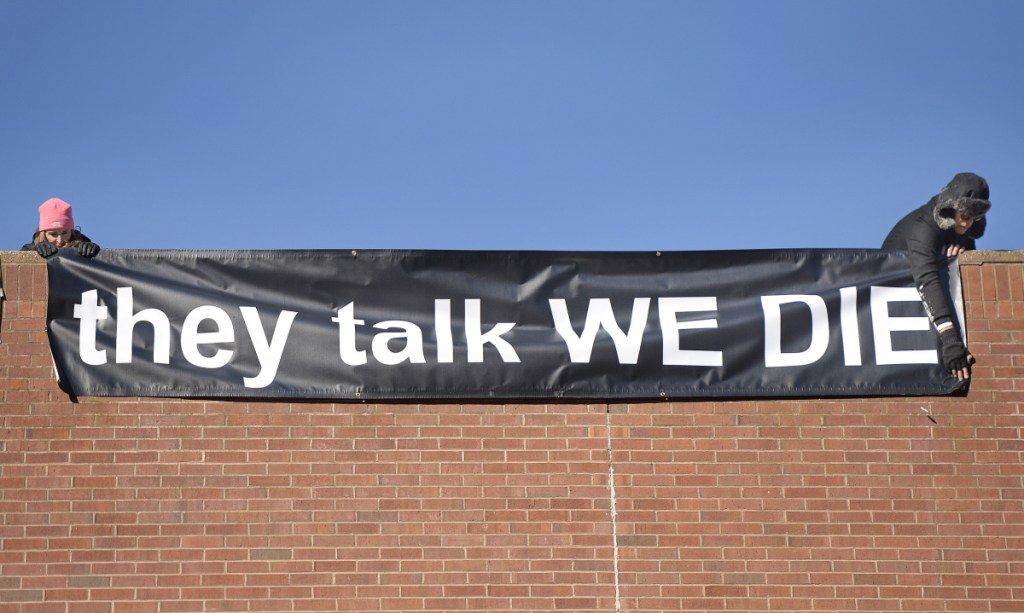2017 set yet another record for deaths from drug overdose. But for the first time in a while, there are reasons for optimism amid the death and misery of the opioid epidemic.
More than 70,000 Americans died of drug overdose last year, according to the Centers for Disease Control and Prevention, up from around 64,000 in 2016. That’s higher than deaths from HIV, car crashes and gun violence at their peaks. It is more than triple the overdose deaths in 2000 and more than seven times the number in 1990.
The steep increase is the result of a long-lasting epidemic that has turned hundreds of thousands of Americans into daily users of opioids, and of the increasing presence of deadly synthetic opioids like fentanyl. Overdose deaths attributed to synthetic opioids have gone from around 3,000 in 2013 to more than 28,000 last year.
GLIMMER OF HOPE
But there is some hope in this otherwise awful report — the CDC says preliminary data show overdose deaths may be leveling off after years of steady increases.
Why? Cities and states across the country are now attacking the opioid like the public health crisis that it is. They are — finally — expanding treatment on a scope that matches the size of the problem, and they are treating those caught up in the epidemic as people suffering from an illness, not as criminals, or weak-minded pariahs. Finally.
That mind-set — long held by addiction experts, health care and social service providers, and, increasingly, law enforcement — has now spread to enough policymakers that a broad-based, community-wide approach to addiction is possible — and bearing fruit.
Take Dayton, Ohio, for example, one of the areas of the country worst hit by the epidemic. In Dayton’s county last year there were 548 overdose deaths by Nov. 30 — more than in all of Maine in 2017. This year, the number fell to 250.
The severity of the epidemic in Dayton got everyone’s attention. But it was the expansion of Medicaid by Republican Gov. John Kasich that allowed them to do something about it on a large scale. As a result of expansion, more than a dozen new providers offering medication-assisted treatment — the gold standard for addiction — have opened in the last year alone.
“If you’re a state that does not have Medicaid expansion, you can’t build a system for addressing this disease,” Dayton’s mayor told The New York Times.
Maine, of course, has not yet expanded Medicaid; though it was passed by voters, outgoing Gov. Paul LePage has refused to implement it.
Without expansion, treatment simply isn’t available to the vast majority of the Mainers dealing with the disease of addiction, most of whom are uninsured. There are groups and individuals in Maine doing great things to fight the epidemic, but without funding for treatment, there’s only so much they can do.
It’s no surprise, then, that Maine experienced the sixth-highest increase in overdose deaths last year, while deaths in Rhode Island, Vermont and Massachusetts all declined.
MILLS’ PLAN
We hope to see a change following the election as governor of Janet Mills, who has promised to expand Medicaid on her first day in office. Mills also has a detailed plan to fight the opioid epidemic that includes wider distribution of the overdose-reversing drug naloxone — another LePage bugaboo that has been widely praised in Dayton and elsewhere for keeping the death total down.
Mills wants to hike Medicaid reimbursement rates for addiction treatment and expand treatment to emergency departments too.
Together with the package of bills passed last legislative session, Mills’ plan would give Maine for the first time a robust statewide plan full of proven initiatives to reverse the drug crisis.
Next year at this time, we could be talking about a drop in overdose deaths — and wondering why we didn’t do all of this sooner.
Send questions/comments to the editors.



Comments are no longer available on this story